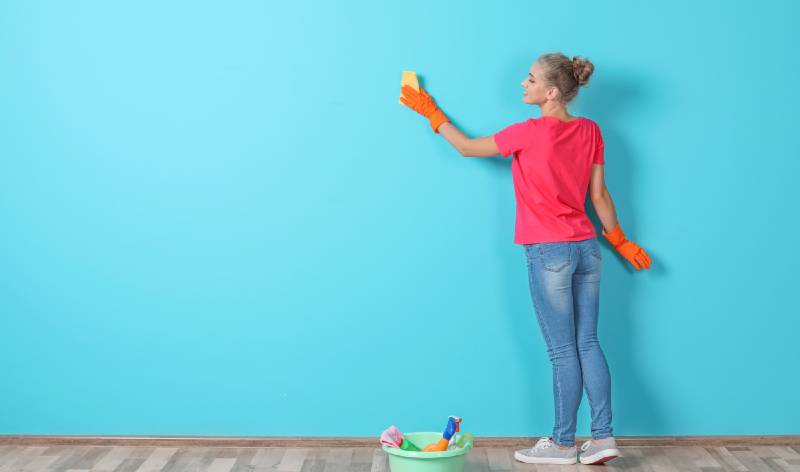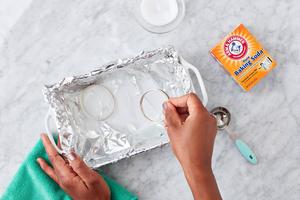
You won't have as many piles to clean if you do it every day. You won't have to worry about making a big mess that takes forever to clean. It is easier to clean smaller piles regularly than large piles that only need to be cleaned once a week. It makes it much easier to manage your house. Here are some tips to help you get started. Start by cleaning bathroom counters, small appliances, remote controls, and the floor.
Cleaning the bathroom counters
Bathroom counters are one of the most used areas in your home. Make it a habit of cleaning them every day. You can make your bathroom counters sparkle with bleach wipes or all-purpose cleaner and a microfiber towel. Glass surfaces like mirrors or shower doors should be cleaned with glass cleaners. For maintaining cleanliness, it is recommended that you clean them at least twice per day.
The best way to clean bathroom counters is with a nonabrasive cleaning product. Because of the humidity in bathrooms, many people find it difficult to keep their bathroom countertops clean. You can choose a countertop cleaner with non-abrasive cleaning chemicals, such Simple Green Granite and Stone Cleaner. A bathroom cleaner can help remove any grime that has built up on bathroom surfaces.

Small appliances are easy to clean
Small appliances, whether it's a refrigerator or microwave oven, can quickly get dirty. These items are frequently placed on countertops and have a heavy rotation. These items can be more difficult to clean than others. However, these guidelines will help you get started. It is important to unplug all small appliances before you clean them. Always follow all instructions provided by the manufacturer and don't immerse small electrical devices in water.
Warm soapy water, a soft, clean cloth, and a scrubber can be used to clean the components of your dishwasher. For perforations within the chutes and blades of the dishwasher, you can brush the bristles with a strawbrush. A detail brush is useful for uneven surfaces and screens. After cleaning the entire appliance, rinse it thoroughly and then reassemble it. You may also want to clean the motor base with a damp cloth.
Cleaning remote controls
Keeping your remotes clean is important for their longevity. It is important to wash your remote controls regularly in order to prevent bacteria and viruses from growing on your device. You can clean your remote with a solution of water and vinegar, or you can use a lint-free cloth. Make sure to get rid of the batteries first. Wipe the remote cleanly afterwards. You should also remove the buttons and battery cavity. After cleaning your remote, it's important to dry it out by allowing it to air dry.
If you aren’t comfortable with cleaning solutions, mix some rubbing alcohol in water. The alcohol will produce suds, which will penetrate the remote's surface and remove dirt. Next, clean the remote with a cotton cloth dipped in the solution. You can also use toothpicks to clean the buttons and seams. Store your remote in its original box after cleaning to keep germs out.

Cleaning bathroom floor
Cleaning your bathroom floor every day should be on your list of must-do chores. Although there are many methods to clean your bathroom floor, a broom or mild cleaning solution is enough to keep it clean and safe. To begin, remove all loose items (including bathroom mats) from the floor. This way, you'll make it easier to clean the floor. You can also use a vinegar solution to scrub the floor.
Small bathrooms won't be able to handle a heavy vacuum cleaner. You should use a small broom to sweep the floor. Sweep along the edges of the room, including around the base of the toilet. When dust piles are small, you can use a damp paper towel to pick them up. It is important to make sure you go under the toilet. You will be amazed at how much debris is tracked in!
FAQ
Is it better to use a professional or a DIY cleaning solution?
It all depends on your home size and the type or cleaning you wish to do.
For small homes, using a DIY cleaning solution is fine. However, if you're planning to clean a big house, you should probably hire a professional cleaning service.
What is the first thing you should do when cleaning a house?
The first thing you should do is clean the windows. This way, you can see what's going on outside. Then, you need to take everything off your floor. Then, take everything off the floor and put it back where it belongs.
The walls should be wiped clean. Check for holes in the walls. If there are any holes, you should fill them with plaster. You can then clean the floors. Next, sweep the entire area. Finally, you should dust everywhere.
What can I do to remove pet hair from my furniture?
Pet hair is a common problem for homeowners. There are several ways to deal with it.
A vacuum cleaner is an option. Using a vacuum cleaner will not only remove the debris but also remove the fur.
Another option is to use a brush. Before vacuuming the furniture, brush its fur.
Statistics
- You must see the house in question when estimating all private house cleaning jobs, according to Cleaning 4 Profit. (freshbooks.com)
- Add 33 percent on top of your cost. (freshbooks.com)
- Typically, you can charge customers about $90 to clean a house that's less than 1,000 square feet and $250 for a house that's 3,000 square feet or more, according to Home Advisor. (freshbooks.com)
- A single-family home should cost $120 to $150 to clean, according to Home Advisor. (freshbooks.com)
External Links
How To
How to clean upholstered furnishings
Cleaning Upholstered furniture is very difficult because of its complex structure, consisting of multiple layers and fabrics. It takes patience as well as skill. There are four main methods: steam cleaning, dry cleaning and washing. Each method has its pros and cons. In this article, we will discuss how to clean upholstered furniture.
Steam cleaning is one of the most commonly used methods for cleaning upholstered furniture. Steam cleaning uses hot water and detergent to remove dirt from the fabric. If there isn't any dust in the upholstery, this process works well. If there is any moisture or dust left after the initial cleaning, you will need to use another cleaning product. Steam cleaning products should not be used if leather is used in upholstered furniture. Leather absorbs moisture and becomes soft, so it cannot withstand heat. Leather is porous so steam can penetrate it, causing damage.
Dry cleaning can be used for upholstery made from only cotton or synthetic material. Dry cleaning is safe for fabric and removes soils. Dry cleaning is ideal for light-to-medium soils. This includes food residues, pet hair, mud and paint. These types of stains can be removed with a vacuum cleaner equipped with a brush attachment.
For furniture made from natural fibers, washing is an option. The washing process usually involves soaking fabric in warm water, along with mild detergent and some soap. After washing the fabric, rinse it in cold water. To gently rub the fabric's surface, use a sponge or a cloth. After rinsing, apply a small amount of stain remover on the spot where the stain was located. Let the mixture sit for at least a couple of minutes before wiping it off. Finally, rinse the fabric. Many stores sell washable upholsteries.
You can make your own upholstery cleaner by making your own solution. Combine 1 cup vinegar, 2 cups baking soda, 1/4 cup dishwashing solution, and place in a container. Fill the bucket with warm water to halfway. Allow the upholstery to soak in the solution for at least one night. Use cold water to thoroughly rinse the fabric. You can repeat this process every two weeks to keep your upholstery looking fresh.
You can wax instead if chemicals are not your thing. You can protect your upholstery from fading, cracking, staining and other damage by waxing. Placing a layer of plastic wrap over the area you are going to wax will help prevent scratches. Use a foam applicator to apply a layer of wax. Wait until the wax dries completely. Remove the plastic wrap and buff the surface with a clean cloth.